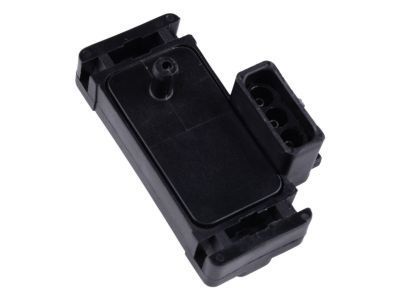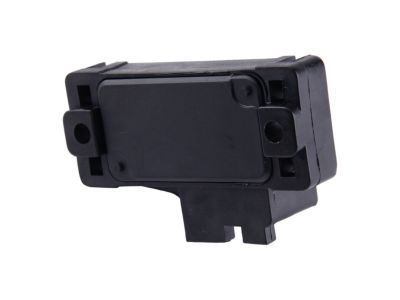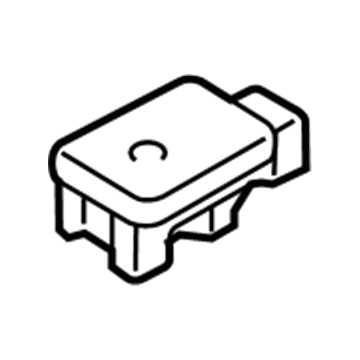
My Garage
My Account
Cart
Genuine Jeep Comanche MAP Sensor
Manifold Air Pressure Sensor- Select Vehicle by Model
- Select Vehicle by VIN
Select Vehicle by Model
orMake
Model
Year
Select Vehicle by VIN
For the most accurate results, select vehicle by your VIN (Vehicle Identification Number).
2 MAP Sensors found
Jeep Comanche MAP Sensor
MAP Sensor installed in Jeep Comanche helps in measuring the positive pressure air, which enters the intake manifold of the vehicle and offers crucial information to the ECU for fuel adjustment. It is assumed in calculations of air density and necessary for the determination of the air-fuel mixture for combustion mainly in the speed density method. In naturally aspirated engines, Jeep Comanche vehicles can have an MAP sensor or a mass airflow (MAF) sensor-Delivery of forced induction engines often involve both. That the MAP sensor also comes in handy in on board diagnostics OBD II and the exercise of getting to the root cause of the problems affecting the ESP Functionality testing of the exhaust gasy recirculation (EGR) valve only cements the place of the MAP sensor is the accurate fuel metering, ignition timing and over all stability of the engines.
Looking for affordable and high-quality auto parts? Then you have already arrived at the proper online shop. We offer all Jeep Comanche MAP Sensor at great affordable prices. Moreover, all genuine Jeep Comanche MAP Sensor come with a manufacturer's warranty. In the long run, you would realize you have saved a lot of trouble and money with OEM parts from here.
Jeep Comanche MAP Sensor Parts Questions & Experts Answers
- Q: What is the MAP Sensor,Oxygen Sensor,Throttle Position Sensor and Coolant Temperature Sensor's Function on Jeep Comanche?A:The engine coolant temperature sensor, a thermistor that varies resistance with temperature, is essential for the vehicle's operation. Testing involves measuring its resistance when cold and warm; a significant difference could indicate sensor failure. Replacing it necessitates preparing the new sensor with Teflon sealing, unplugging the electrical connector, and swiftly replacing the sensor to minimize coolant leakage. The manifold absolute pressure (MAP) sensor monitors intake manifold pressure changes, aiding the ECM in fuel delivery and ignition timing control. Testing involves connecting jumper wires, and a voltmeter should read about 4.5 to 5 volts with the ignition on and fluctuate when the engine warms up; failure may trigger Code 3Replacement requires detaching the vacuum hose, unplugging the electrical connector, and removing mounting screws. The oxygen sensor, positioned in the exhaust system, monitors exhaust gas oxygen content to inform the ECM's fuel mixture control. Testing with a voltmeter at normal operating temperature should result in voltage fluctuations; a lack of variation might indicate sensor or fuel system issues, leading to Code 13 or 4 The throttle position sensor (TPS) on the carburetor float bowl helps the ECM determine fuel delivery based on throttle valve angle. Check its resistance with an ohmmeter, and if it's inconsistent instead of progressive as you move the throttle, replace it. Replacement involves unplugging the electrical connector and removing the TPS assembly. Adjustment, if needed, requires drilling a hole in the adjustment screw's plug, connecting terminals, and adjusting the screw to achieve a specific voltage reading. Finally, the plug is replaced or sealed with RTV.
- Q: What does the Intake Manifold Temperature Sensor,Knock Sensor,MAP Sensor,Oxygen Sensor,Speed Sensor,Coolant Temperature Sensor and Throttle Position Sensor do on Jeep Comanche?A:Information sensors provide data on engine conditions, aiding in fuel economy and emission reduction. The oxygen sensor in the exhaust manifold measures oxygen content in the exhaust, adjusting the fuel/air mixture. The knock sensor detects engine detonation, retarding ignition timing. The coolant temperature sensor monitors temperature for fuel/air mixture adjustments. The manifold absolute pressure sensor reads pressure changes to vary the air/fuel mixture. The manifold air temperature sensor measures air temperature for fuel/air adjustments. The crankshaft position sensor detects engine speed for ignition timing and fuel control. The vehicle speed sensor determines vehicle speed.














